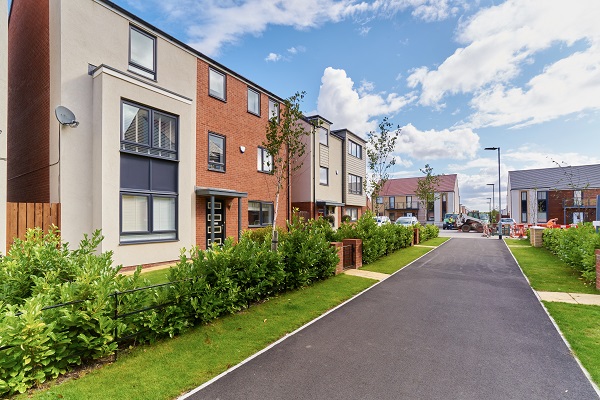
This is the third in my series of articles about the new Gateway 2 and 3 regulations.
This article focusses on the difficulties with design standards and late regulatory consultation. Realistically, any clients that actually understand the new regime are likely to instruct that the design is as code-compliant as possible, simply to have any chance of getting permission to start on site without huge delays.
That could have a major impact on issues such as open plan flat design and any use of fire engineering, as described in this article.
As before, this article is based on my review of the new regulations (along with my nearly 30 years’ experience of fire engineering) and as they haven’t come into effect yet, the reality could be different. But one way or another, the new regulations will definitely result in HRB projects starting on site much later than they have in the past. Once clients, developers and contractors become aware of that, they are likely to put a major focus on ways to reduce that delay.
Gateways 2 and 3 – How risk-averse do we need to be?
Introduction
- Fixing design standards;
- Lack of early consultation with regulators.
Fixing design standards
Normally, the version of the design standards that are to be used are fixed by the date of the Building Regulations application, although sometimes there is also a ‘start on site’ criteria as well. In the past (and still for non-HRBs) the Building Regulations application can occur at an early point in the design, which fixes the version of the design standard that is to be used, and the detailed design can then progress based on that.
However, under the new Gateway 2 process, the Building Regulations application only occurs once the design is largely complete and there aren’t any earlier stages in the Building Regulation process that would fix the versions of design standards that are to be used. This would mean that the version of the design standards that have to be used are only fixed once the design is virtually complete. That will create challenges because if a new or revised version is published shortly prior to the Gateway 2 application, then the design may need to be changed to meet that new version, despite the fact that the design is nearly finished.
The Gateway 2 process only applies to HRBs in England, so I’ve used English design codes as an example.
Residential buildings would typically be designed to either Approved Document B Volume 1 (ADB) or BS 9991.
In recent years ADB has been amended many times. The latest version of BS 9991 was published in 2015, and it is in the process of being updated. At the time of publication of this article, the publication date is scheduled for June 2024. However, that update process has been challenging and the publication date has been put back several times, so there is no guarantee that it will not be put back further.
So, for a theoretical project where the Gateway 2 application is planned for August 2024 and the fire engineer has based the design on BS 9991, if the new version of BS 9991 is published in June, then the design will have to be modified to comply with the new version. We don’t know exactly what the new version of BS 9991 will contain, but from earlier published drafts, we do know that it will be substantially different from the previous 2015 version. Modifying the design to comply with the new version of BS 9991 could require major changes to a design which will at that point be largely complete. The client is unlikely to be very happy with that.
Fire engineers may choose to base their design on ADB instead. ADB is being updated at intervals, and there is due to be an update soon to address the issue of secondary stairs. I would note that the issue of secondary stairs is a significant topic in its own right and isn’t affected by the Gateway 2 process, so I have not gone into that further in this article.
If fire engineers do base their designs on ADB rather than BS 9991, then they will have to carry out fire engineering analyses (or other approaches) to deal with certain issues where BS 9991 gives different or additional guidance from ADB.
This includes:
- BS 9991 allows corridor travel distances up to 15m in sprinklered buildings, whereas ADB only allows 7.5m. This could be addressed by enhanced smoke ventilation, but could end up with additional smoke shafts.
- BS 9991 allows open plan flats within certain size limits. ADB does not.
- BS 9991 gives guidance on situations where flats are accessed via open walkways but ADB gives no guidance on that issue.
So, basing the design on ADB rather than BS 9991 may be sensible as it would reduce the risk of major late redesigns being required, but it would create other challenges for the design.
Some of those issues will be impacted by the issues covered in the next section of this article.

Lack of early consultation with regulators
As noted in earlier articles, the BSR is currently not allowing any early consultation on issues relating to project design. This means that designs need to be largely complete before they can be submitted for Gateway 2, which creates major challenges for the design team.
On large projects (and all HRBs are large projects) there are always many complexities and areas where there can be differing views on certain subjects. Sometimes it’s not entirely clear what regulations apply, and in almost all projects there are differing views on interpretations of those regulations.
Without any ability to discuss and agree those issues at an early stage of design, there is a very high chance that the regulators will have comments or disagreements on issues which massively change the detailed design (which has already been completed). That would often result in major delays to the project, plus significant additional costs for the redesign.
Project teams that are aware of this issue might decide that to de-risk the project, the design will need to be as code-compliant as possible.
If we combine that with the earlier comment on design standards, a risk-averse design would be a code-compliant design based on ADB. That would affect the design in various ways, but the two issues that would affect the layout most would be the corridor designs and open plan flats.
ADB limits corridor travel distances to 7.5m, with no increase to 15m for sprinklers (that’s only in BS 9991). Any extensions beyond that would have to be on the basis of a fire engineered design, typically including a mechanical corridor ventilation system. There are design codes for those (notably by the Smoke Control Association) so it might still be considered to be a moderately low risk approach, but it would still require CFD analyses and it often takes multiple analyses to cover all the comments from the regulators.
There is also a question as to whether open plan flats can be used. Open plan flats have become very popular in design, as they create flat layouts that are more attractive and more usable, with less reliance on internal doors. The designs rely on sprinklers and fire alarms to provide appropriate safety standards, rather than internal doors which, in practice, are often left open anyway (there is no requirements for the internal doors to be ‘self-closing’) so there is no reduction in safety standards.
So if the client/developer wants a risk-averse, code-compliant approach to ADB, open plan flats would not be allowed at all. This could significantly affect building layouts, and potentially even the valuation of the flats, so it is a very significant issue. Fire engineering could justify the use of open plan flat layouts, but that would re-introduce the regulatory approval risk as noted earlier.
Conclusions
So, in summary, design teams may be stuck between a rock and a hard place. Either:
- do a design which maximises the layout and creates apartments that are safe and popular with residents, but creates a risk of major delays before work can start on site; or
- do a risk-averse, code compliant design which has a reduced chance of delays due to difficulty with regulatory approval, but where the layout is inefficient and apartment layouts are unattractive to potential residents.
In practice I think many clients/developers who have not really engaged with the new regulations are likely to go for the former, because changing layouts would have a very real impact, and they may not want to believe the people (like me) who are telling them that it will be a problem. Clients/developers who have been engaging with the new regulations and appreciate the difficulties with the new regime are likely to go with the latter approach.
But, as with all of these issues, we will have to see how it all works in practice.